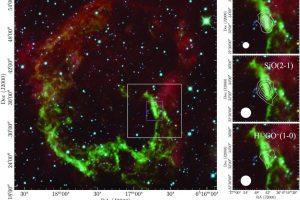Supernova explosions can trigger star formation events. The study: “Negative and positive feedback from a supernova remnant with SHREC: a detailed study of the shocked gas in IC443” of G. Cosentino (Chalmers University of Technology) recently appeared on MNRAS

A supernova is the final act of the evolution of a massive star. These spectacular explosions are among the most energetic events we observe in the Universe, and they can seriously impact the surrounding environment. In particular, during the expansions of the supernova remnants, which are the expanding clouds produced by supernova explosions, the process of star formation in the
» Read more

